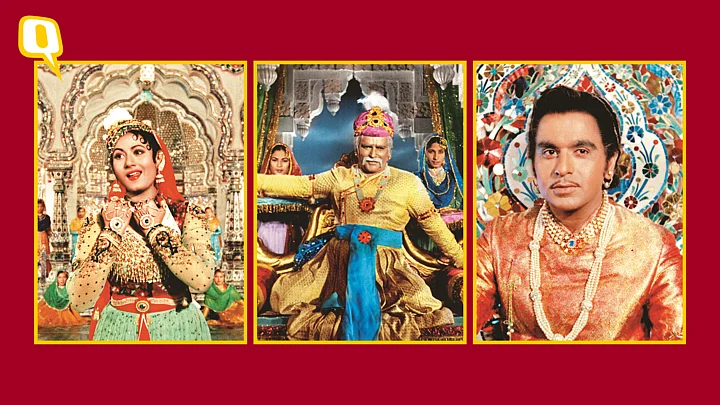Yes. You are reading it correct, the story of Salim Anarkali is only 100 years old. The legendary story was penned by the eminent playwright Syed Imtiaz Ali Taj in 1922. And since then, this story has been experienced by audiences in multiple formats - Radio Play, Theatrical play, Silent film, B&W film, Colour film, Book and Broadway style musical.
As a legendary story, its uniqueness lies in it actually being just 100 years old.
Most legendary stories that have survived the time are actually several centuries old - be it Romeo & Juliet, Laila Majnu or Dhola Maru. Legendary stories, in their kernel, have some special element that ensures thatit keeps connecting with its audiences over multiple generations and in newer formats. And in many cases, it is not just the original author but multiple writers who, over the years, add strength and longevity that transform a story into a legend.
The story of Salim and Anarkali being a classic example. In the Imtiaz Ali Taj’s version, Anarkali is punished to death. But when the writers for Mughal-e-Azam ( K Asif, Amanullah Khan, Ehsan Rizvi, Kamal Amrohi and Vajahat Mirza) wrote the story, they not only added new hues to characterization but also gave a twist to the climax. As a result, the story reached new heights.
Good writing is not necessarily about writing original stories but it could also be about writing good adaptations. Adaptations are not always remakes or copies, new authors add their own creative juices as they experience new audiences and new formats. And it is the success ratio of adaptations that is the current topic of discussions in Bollywood. A few years back, the issue being discussed was that Bollywood lacks original writing. But I think, that these discussions are only digressions from the real issue.
The real issue is Bollywood’s failure in providing the appropriate platform for writers to flourish.
Writers write multiple stories, not all stories taste success. Story writing is like a start-up activity. Angel investors fund start ups but only a few reach the stage of VC, fewer till PE and even fewer get the unicorn valuation and IPO status. But this does not mean that the young founders who work in unsuccessful start-ups do not get paid anything at all. The same should hold true for writers. Good writers cannot survive in an ecosystem that only pays them a success fee. The system also needs to feed writers continuously for them and their creative juices to survive.
Producers like Raj Kapoor, BR Chopra and many others would hire writers and regularly pay them. Not all stories would get transformed into films but that risk was borne by RK Films, BR Films etc. and not with the writers. In short, the connect between writer-producer then was that of a relationship and not that of a contractual transaction. Writing is a process of hit and trial and few writers have the risk appetite to survive till the success. It is no surprise that best stories from Bollywood have come in 1950s and 1960s when this culture of curation of writers was at its peak.
It is only when writers get an appropriate platform for curation that legendary stories are born.
K Asif had originally started Mughal-e-Azam with Shiraz Ali Hakim along with plans to write and direct other films as well with Shiraz Ali. When Ali shifted to Pakistan, Asif did not abandon his co-writers. He continued with them and approached new financers (as a founder of a start-up would do today) and kept the writers away from that pain and ultimately found Shapoorji.
It is this kind of approach that is required to nurture writers and curate the writing process. And let me surprise you with a not-so-commonly known fact.
The next project planned by K Asif and Shapoorji was Ramayan, however, by the time Mughal-e-Azam was complete, Shapoorji had grown old.
I only wish that the second project too had seen light of the day, we would have seen another legendary Indian story on an international canvas.
Now, in 2022, as we celebrate 100 years of the story of Salim and Anarkali, we incidentally also celebrate the 100th anniversary of K Asif ( 1922-1971).
Today, neither K Asif is there, nor the writers who wrote or adapted the story of Salim Anarkali but this line from Mughal-e-Azam would provide all those writers a valuation bigger than any unicorn of today:
Yeh kya kam hai ki mar jaane pe duniya yaad karti hai.MUGHAL-E-AZAM
(Deepesh Salgia spearheaded the Design and Direction for Mughal-e-Azam (Colour version). He is also the Creative and Strategic Vision for Mughal-e-Azam: The Musical)
(At The Quint, we question everything. Play an active role in shaping our journalism by becoming a member today.)
